How Agencies Can Optimize Approval Workflows
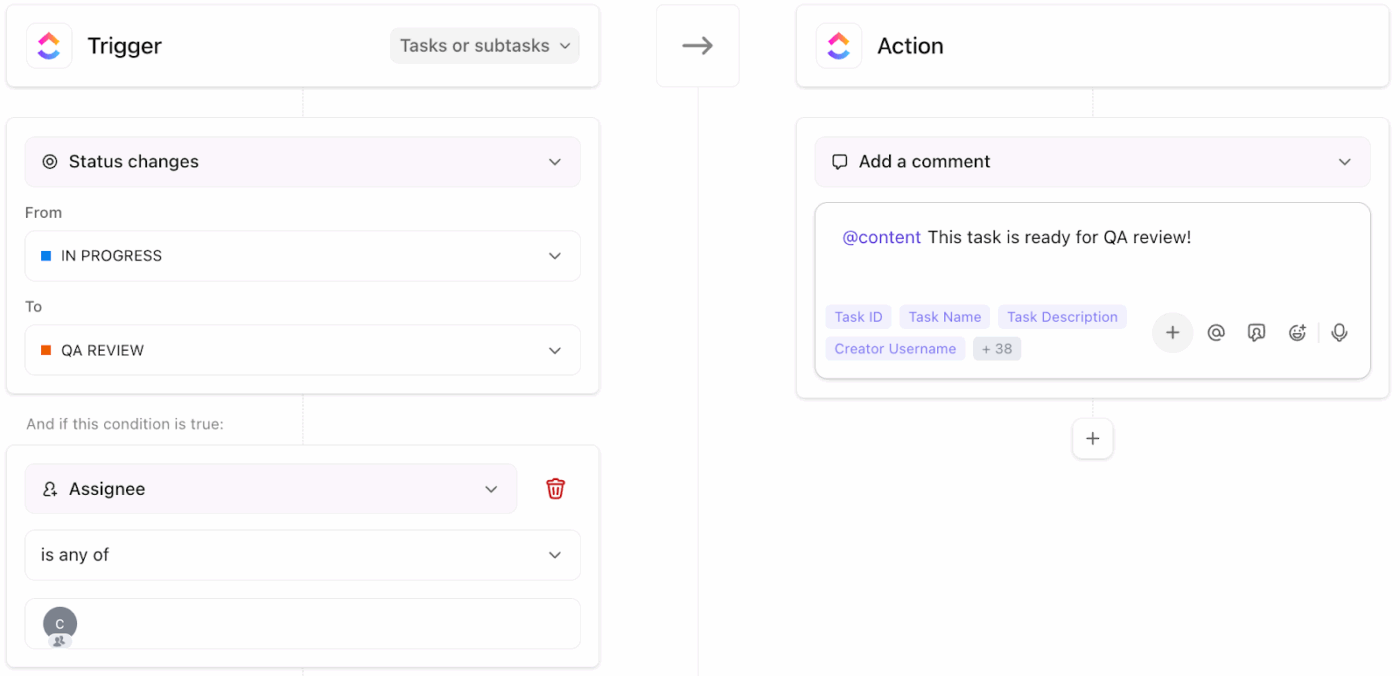
Sorry, there were no results found for “”
Sorry, there were no results found for “”
Sorry, there were no results found for “”

There’s nothing quite like the buzz of a new campaign coming together. Designers nail the visuals, copywriters hit the perfect tone, and the client is genuinely excited about what’s taking shape.
And then…everything screeches to a halt because someone still hasn’t approved the headline, or the design feedback is lost in a long email chain.
For agencies, this cycle eats into deadlines, team energy, and client confidence.
That’s why, in this blog, we’ll discuss how agencies can optimize approval workflows in a way that reviews become faster, feedback is clearer, and everyone knows what needs to happen next.
You’ll also find out how ClickUp, the everything app for work, helps make this process seamless. 🤩
The ClickUp Project Request and Approval Template gives you a well-defined approval process for agencies. With fields for cost, impact, and item type, every submission contains the right details upfront, cutting down on delays. Plus, you can use statuses like Under Review, Approved, or Rejected to make it easy for everyone to see where a request stands.
Your approval workflows are bleeding money, and it’s happening in ways you might not even notice. Here are some common challenges you may encounter. 🚧
Your client’s director gives the green light on the marketing campaign strategy, and then their legal team suddenly appears with concerns nobody has mentioned before. Now their CEO wants messaging that completely contradicts the approved brief.
But wait, there’s more coming:
Each stakeholder thinks they’re helping, but since they never coordinate with each other, your team gets pulled in different directions.
🧠 Fun Fact: The earliest ‘approval workflow’ systems date back to ancient civilizations. In Mesopotamia, scribes would inscribe trade agreements on clay tablets, which required seals (like signatures) from multiple parties.
Campaign assets vanish into client organizations, and you’re left guessing where they are in the approval chain.
You can’t tell if the delay is because someone’s on vacation, if internal reviews are taking longer than expected, or if your email got buried in someone’s inbox. This visibility gap makes it impossible to plan resources effectively.
Most of the time, you’re unsure whether to keep your team on standby for immediate revisions or move them to other projects.
📖 Also Read: How to Manage Multiple Marketing Projects Like a Pro
Approval ownership can get messy. Your account lead assumes the client will coordinate their internal stakeholders, while the client expects your team to manage the entire approval process workflow.
Then new decision-makers show up mid-project without clear authority levels, and suddenly everyone’s waiting for someone else to take charge. These gaps burn through project budgets despite nothing moving forward.
🔍 Did You Know? Authority bias plays into approvals. People are more likely to accept decisions if they come from someone in a position of authority, even if the reasoning is unclear, highlighting why transparent processes matter.
File chaos multiplies when feedback comes through multiple channels without coordination.
Your designer might be working on version 12 while stakeholders send comments based on version eight. Email feedback contradicts what was said in meetings, and nobody knows which input takes priority.
This version control issue has your team spending billable hours on figuring out what’s relevant instead of making changes.
Rush campaigns expose every weakness in your supposedly effective approval workflow. Standard processes that work well for normal timelines often fall apart when clients require fast turnarounds.
Let’s look at the most common urgent project bottlenecks:
These bottlenecks impact project management effectiveness. They create delays that affect other clients and damage your agency’s reputation for reliable delivery.
🧠 Fun Fact: Medieval guilds ran on approvals. Craftsmen couldn’t sell goods without approval from guild masters, who inspected for quality and compliance with trade rules. This isn’t too different from today’s quality control checks in agencies.
Agencies need approval workflows that cut friction and maintain quality. Use these steps and map them into ClickUp’s Creative Agency Project Management Software to stay aligned.
Let’s see how the approval workflow software helps! 🧰
When multiple clients send requests via email, chat, or even WhatsApp, details can easily get lost. You need a way to channel every request into one reliable source.
For example, create a request form in your workflow software, asking for budget, target audience, key deliverables, and preferred timelines.
With ClickUp Forms, those client inputs can automatically turn into ClickUp Tasks. If a client fills out your website redesign form, a task is instantly created, assigned to the account manager, and linked with all uploaded assets, such as brand guidelines or logos.
Here’s what makes forms work best for agencies:
Learn how to transform your intake process:
After collecting a clear request, the next step is to split it into actionable pieces.
A campaign like ‘Launch a new fashion ad’ needs smaller, owned steps like scriptwriting, casting, editing, and client approvals.
ClickUp for agencies makes this easy to manage.
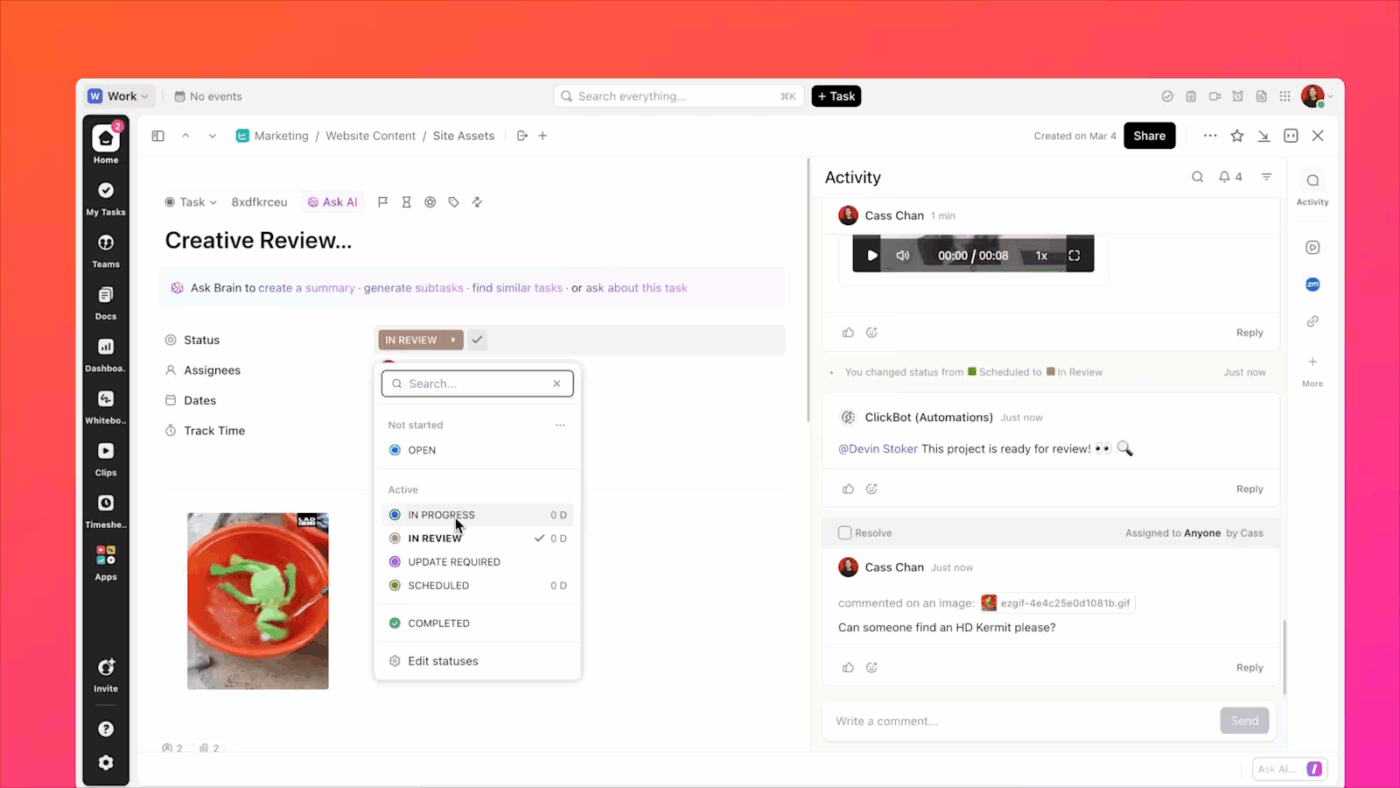
Each deliverable becomes a task, assigned to the right team member, with subtasks for micro-steps. The video shoot task could have subtasks for:
ClickUp Custom Task Statuses then show exactly where each task sits. Instead of generic statuses like ‘In Progress’, an agency can set up ‘Concepting’, ‘First Draft Ready’, and ‘Client Feedback Received’. Everyone sees how work is moving without sending update emails.
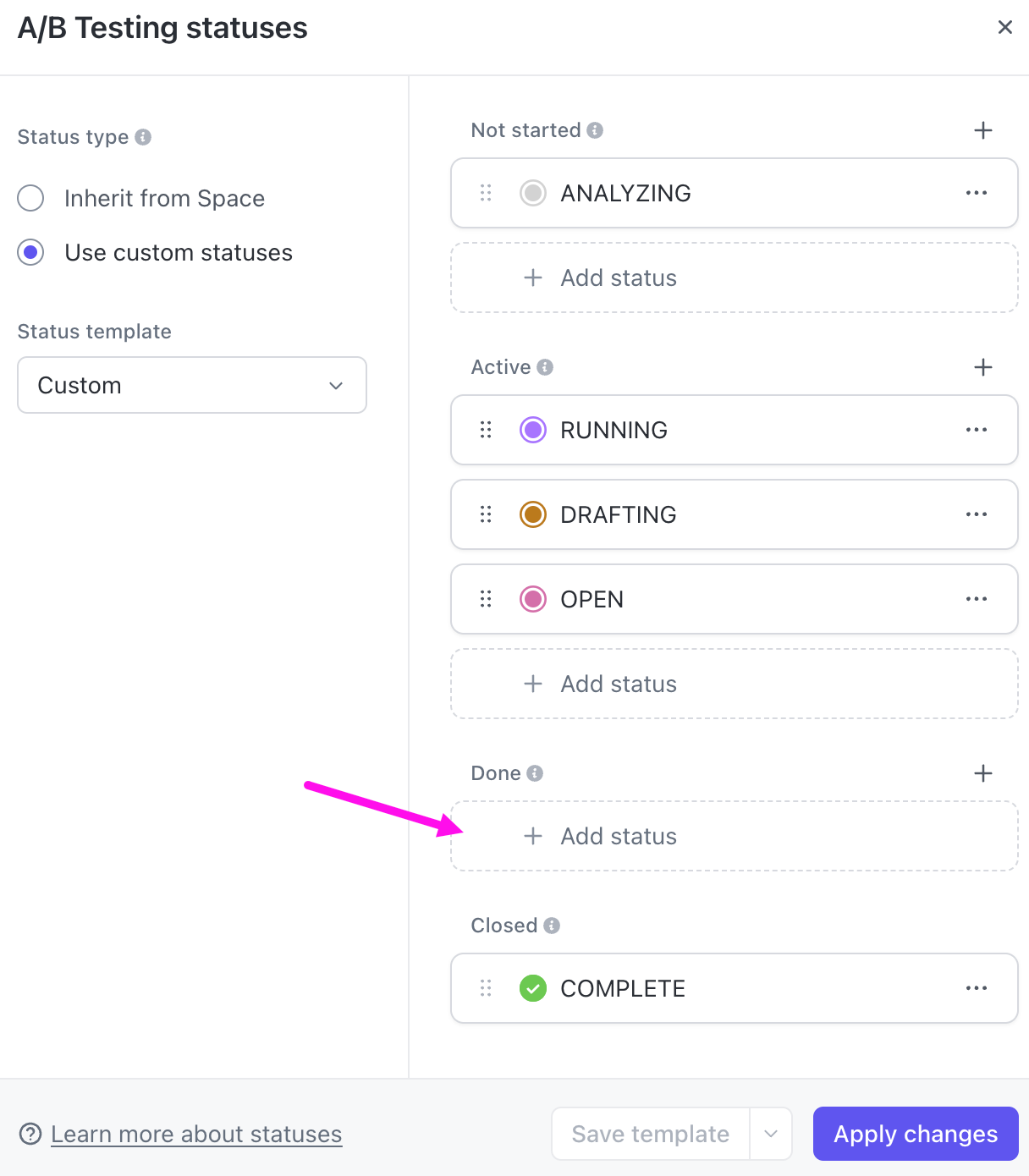
Here’s what Tyler Guthrie, Director of Revenue Operations, Home Care Pulse, had to say about using ClickUp to manage approvals:
Forms and approval processes are very easy to implement and make handling inter-departmental requests much easier saving time.
Creative work often moves through layered reviews: internal creative lead, account manager, then client sign-off. If those steps run out of order, deadlines crumble.
ClickUp Task Dependencies let you control this flow. For example, the editing task cannot start until the creative director approves the storyboard. Dependencies lock the sequence so no one jumps ahead.
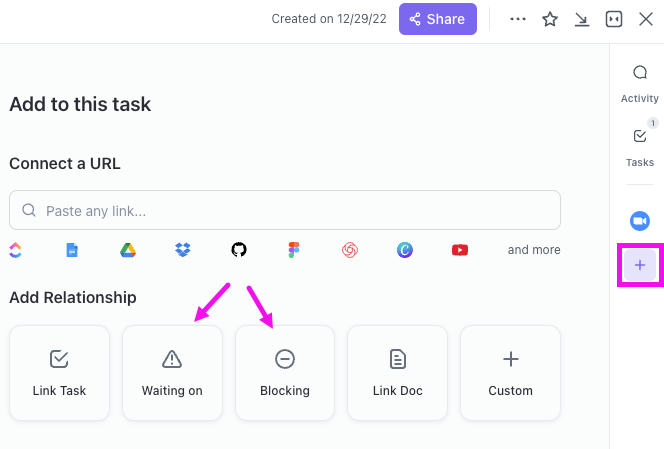
Let’s say your agency is delivering a set of banner ads. The design task remains blocked until copywriting is finalized. Once the copy task is marked complete, the design task automatically opens.
📮 ClickUp Insight: 24% of workers say repetitive tasks prevent them from doing more meaningful work, and another 24% feel their skills are underutilized. That’s nearly half the workforce feeling creatively blocked and undervalued. 💔
ClickUp helps shift the focus back to high-impact work with easy-to-set-up AI agents, automating recurring tasks based on triggers. For example, when a task is marked as complete, ClickUp’s AI Agent can automatically assign the next step, send reminders, or update project statuses, freeing you from manual follow-ups.
💫 Real Results: STANLEY Security reduced time spent building reports by 50% or more with ClickUp’s customizable reporting tools—freeing their teams to focus less on formatting and more on forecasting.
Agency feedback often gets lost in long chat threads. A vague ‘Change this color’ message can leave teams guessing who should take action. Feedback needs ownership.
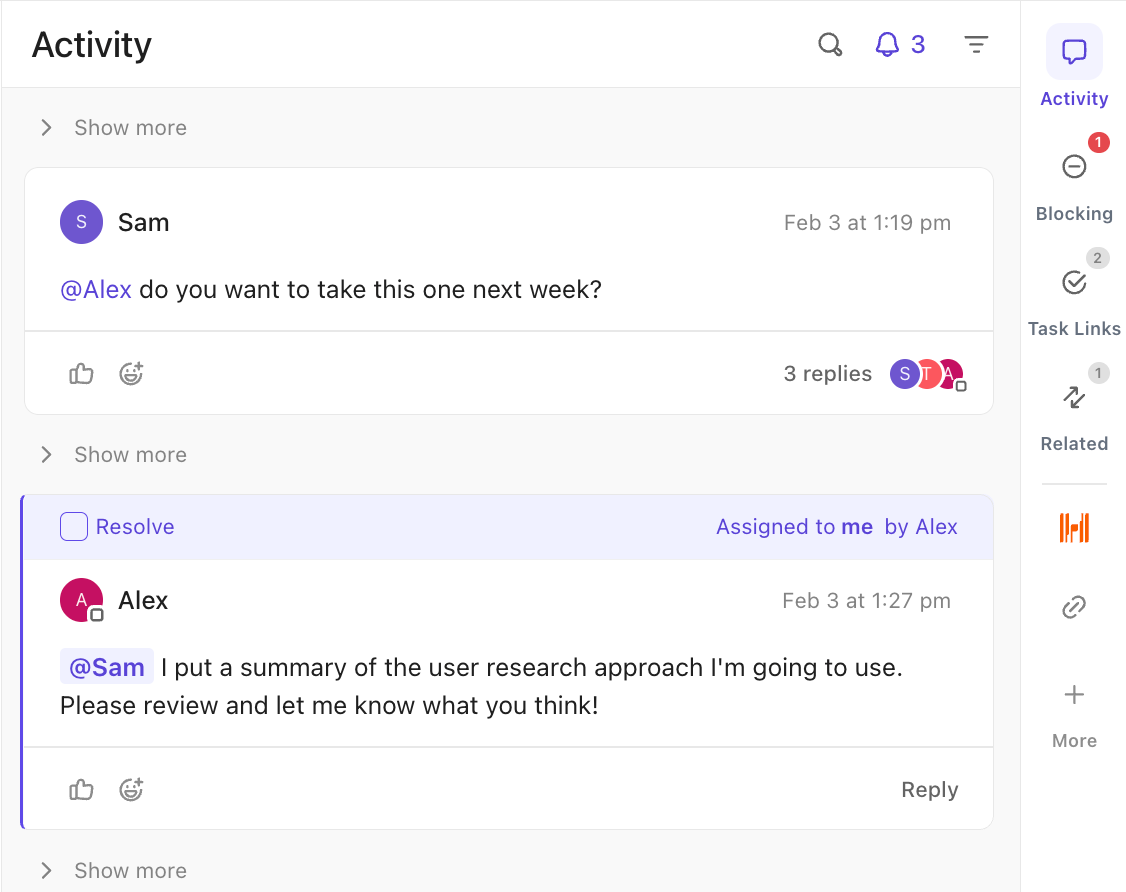
ClickUp Assign Comments solves this directly. For instance, when a client notes that the CTA button on a landing page feels weak, the account manager adds an assigned comment tagging the designer. That comment stays open until the designer resolves it.
Or suppose your agency is running a photoshoot. The creative lead can leave an assigned comment on the ‘Finalize edits’ Task: @Jamie, replace image 3 with the alternate shot. Jamie gets notified immediately, and the update stays tied to the task.
🧠 Fun Fact: Paperwork approvals inspired office humor for decades. From Dilbert comics to ‘TPS reports’ in Office Space, approval bottlenecks have been a universal corporate pain point.
Here’s a hilarious example:
Even with a new workflow created, agencies spend hours setting reminders for client feedback, moving tasks into review stages, or notifying teams of changes.
ClickUp Automations take this repetition off your plate. They work on a simple ‘if this, then that’ rule, letting you set custom triggers and actions within the centralized platform.
Say you’re delivering a rebrand package. As soon as the design team finishes logo concepts, Automations triggers an email to the client saying drafts are available in the creative project management software. The process keeps moving without someone remembering to send reminders.

Here’s how workflow automation supports approvals:
📖 Also Read: Workflow Automation Examples and Use Cases
Client approvals often get derailed when communication spreads across multiple channels. Teams need a single location where all conversations are connected to deliverables.
ClickUp Chat lets agencies keep those discussions inside the project workspace.
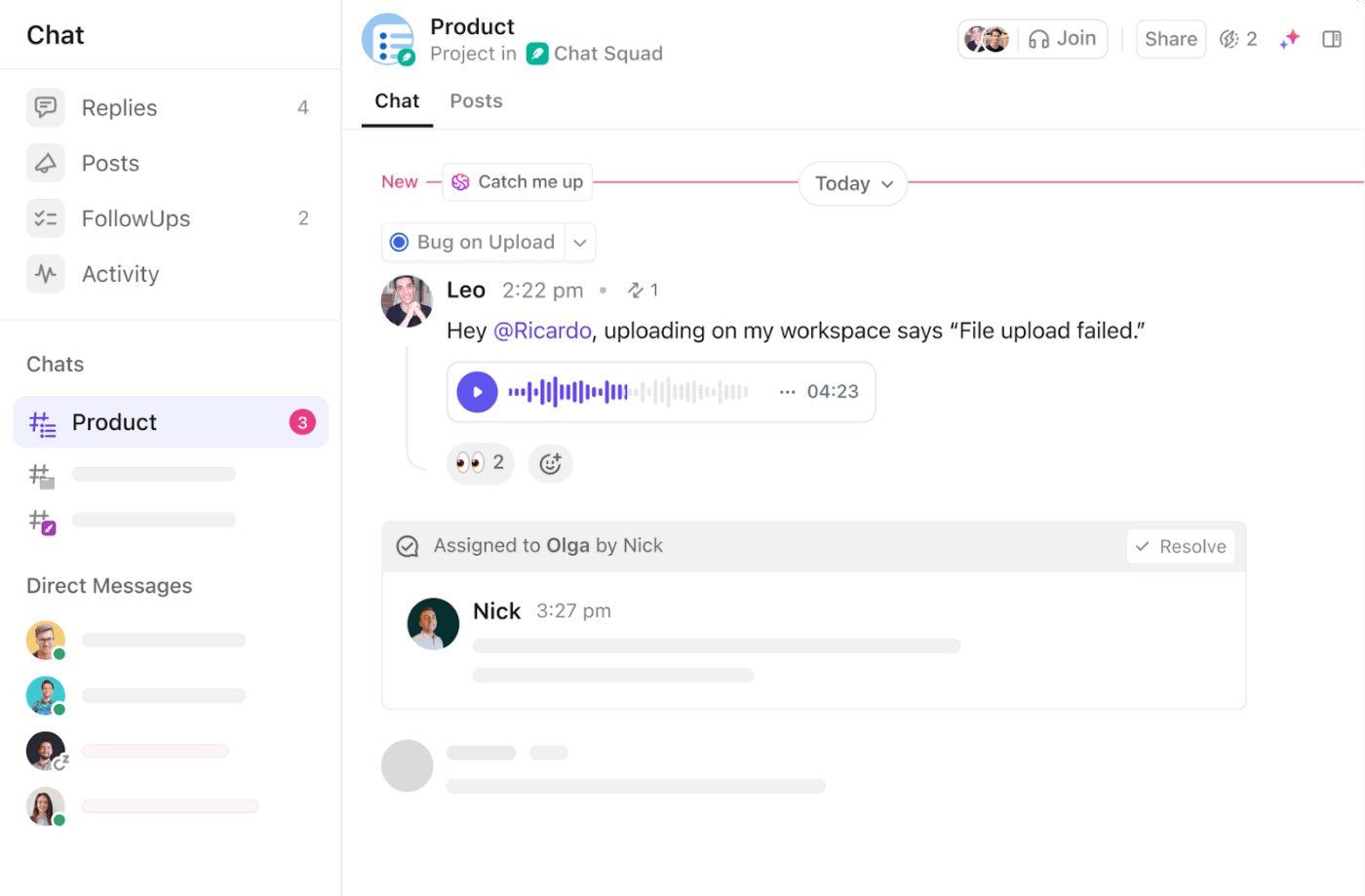
For example, when a client has edits for a campaign video, the account manager can drop those notes directly into the channel linked to that campaign. Designers and editors see what’s going on without any context or Work Sprawl.
For live discussions, SyncUps in ClickUp Chat add another layer. You can start an audio or video call in any channel or DM.
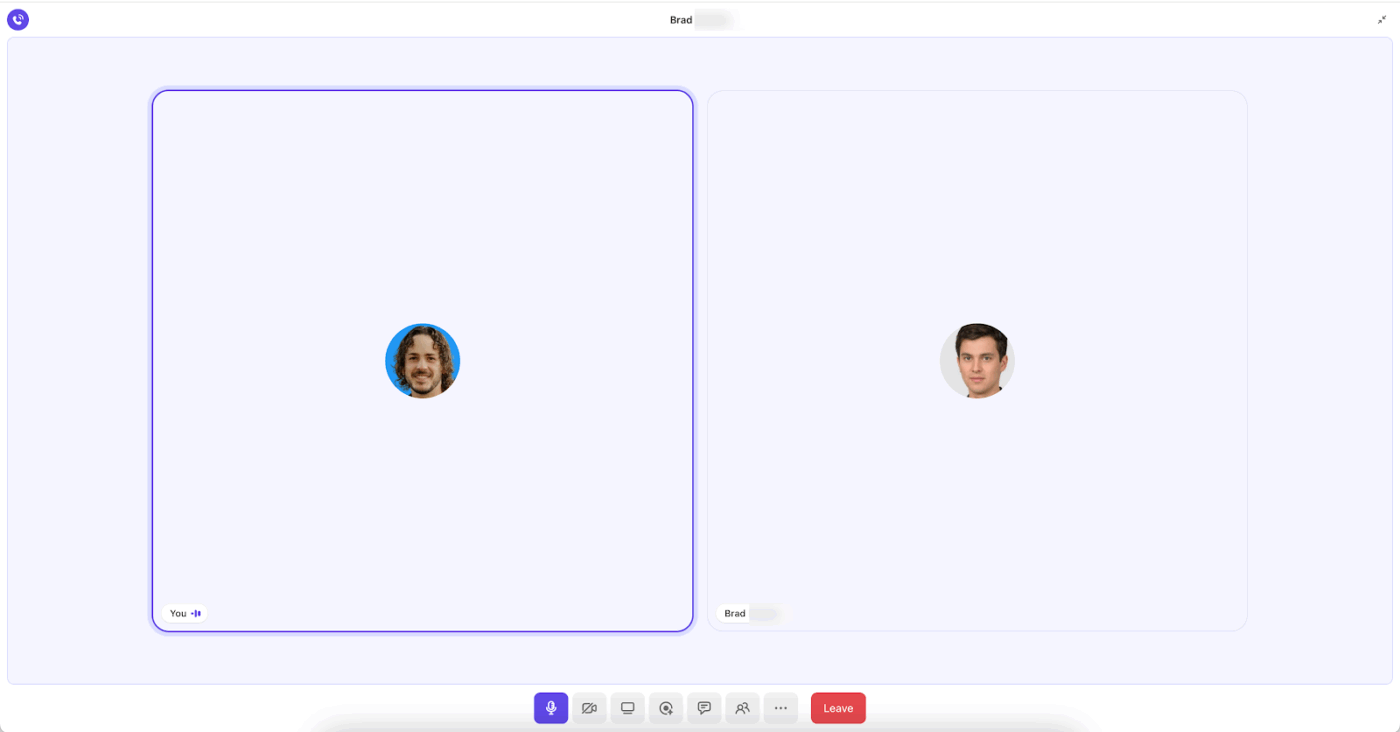
Suppose your creative director wants to resolve client edits in real time. The team starts a SyncUp in the dedicated project channel, reviews feedback together, and updates tasks during the call. While the call runs, you can work together to edit docs or adjust whiteboards.
When campaigns hit the client review stage, teams often waste hours sifting through bulky briefs, messy email threads, or repeated client questions. Agencies can save that time by using AI to filter the noise and highlight what matters.
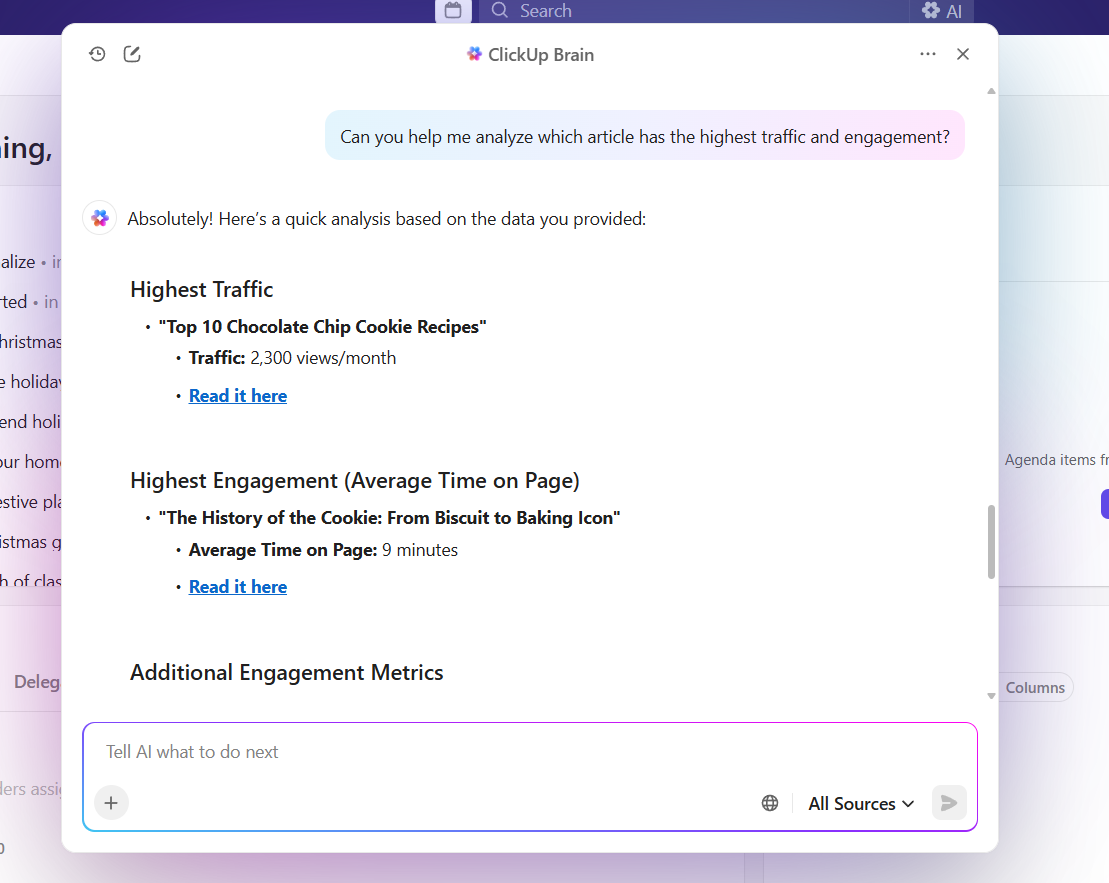
ClickUp Brain acts as your creative team’s on-demand assistant during reviews.
For example, if a client sends a 15-page rebrand document, you can ask the AI Project Manager to generate a two-paragraph breakdown of the most important guidelines for tone, visuals, and audience. This way, the design team gets clarity without reading every line.
ClickUp Brain’s AI Writer for Work can write alternative captions aligned with the client’s brand voice, giving copywriters a quick baseline to refine.
You can also:
✅ Try this prompt: Summarize this client feedback thread into three key revisions we need to implement before the second draft.
💡 Pro Tip: To cut down review time even further, ask ClickUp Brain to summarize long chat threads into concise action points.
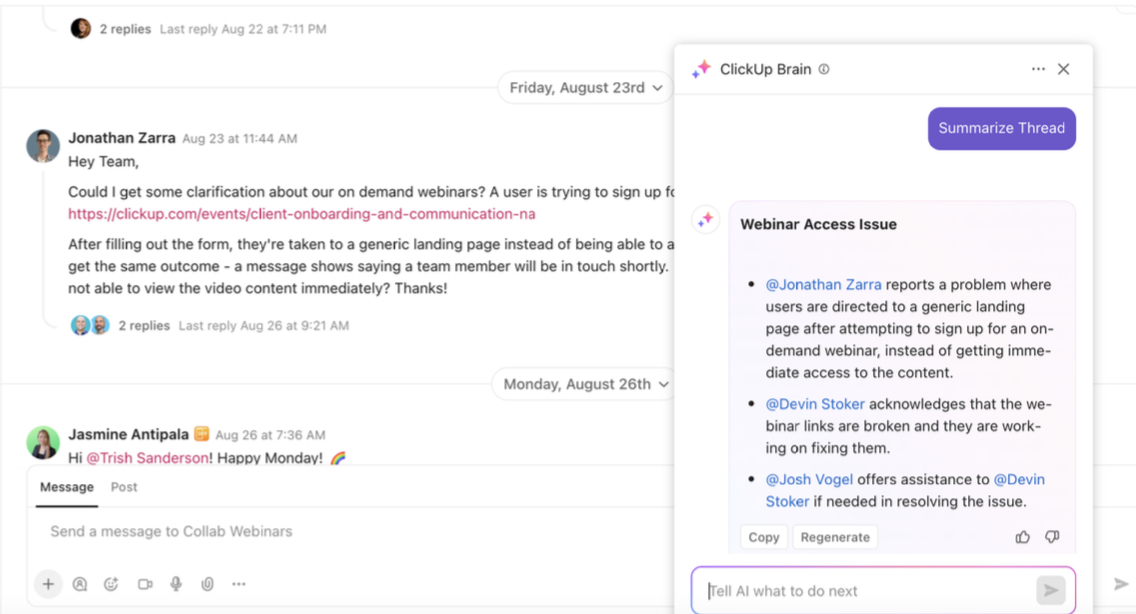
Each client has unique requirements, and every campaign follows its own workflow model.
ClickUp Brain MAX, a desktop AI companion, connects multiple AI models, including ChatGPT, Gemini, Claude, and DeepSeek, to your workspace. It also links across your apps, making it easier to pull context from Google Drive or Figma into your approval process.
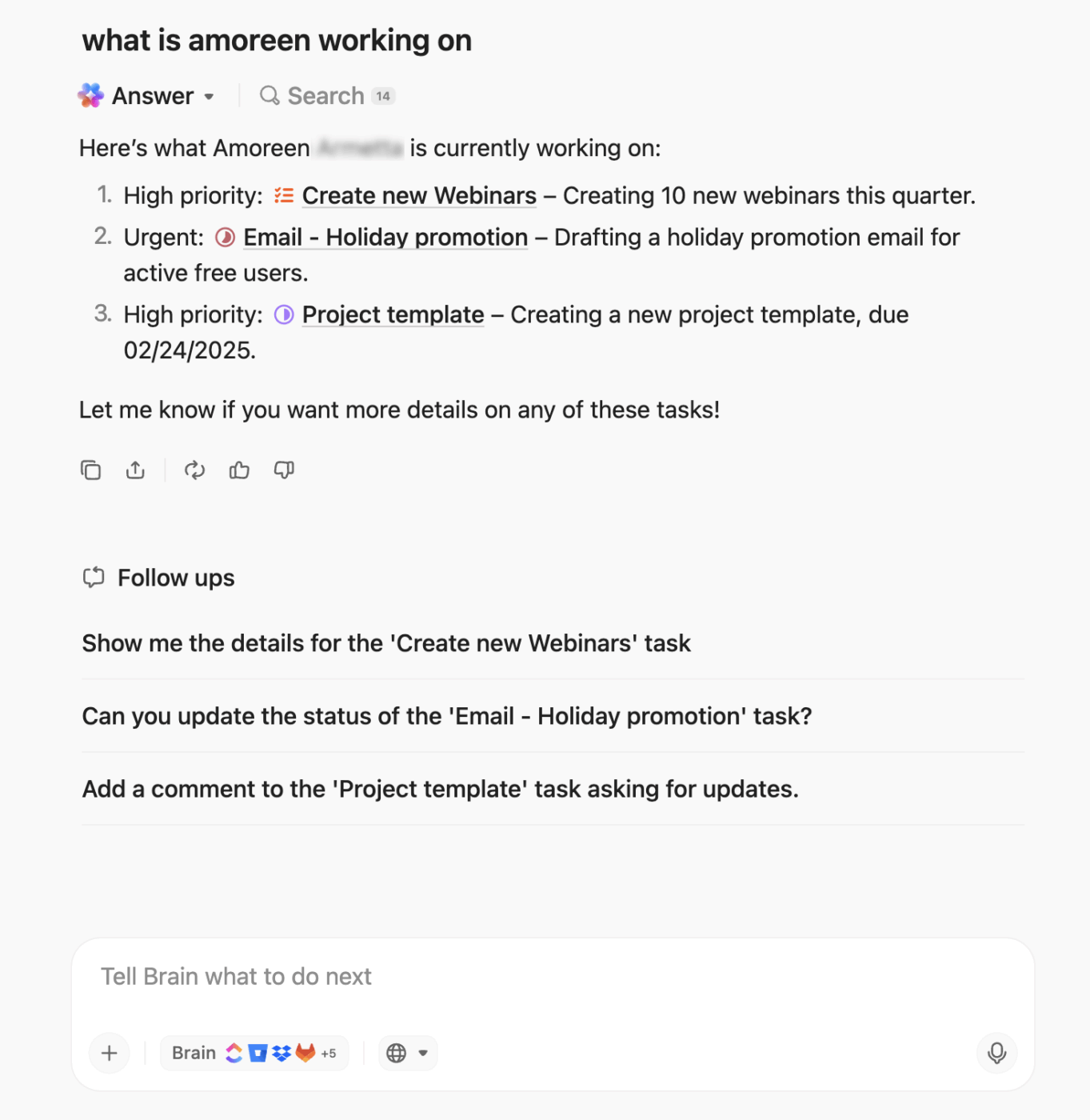
For example, if three different clients all schedule video shoots in the same week, Brain MAX forecasts potential resource strain. It might suggest reassigning editors or extending one deadline to prevent missed deliveries.
✅ Try this prompt: Analyze the past five campaign approval cycles for Client A and highlight where delays occurred, then recommend adjustments to implement during the next launch, ensuring continuous improvement.
🚀 ClickUp Advantage: The ClickUp Project Request and Approval Template offers a structured folder setup in which every project request or client brief is submitted via a standardized form.
With ClickUp Custom Fields such as Description, Impact, Impact Cost, Item Type, and Probability, you get essential context and quantifiable metrics from the start.
Here are some best practices to keep approval workflow management smooth, predictable, and stress-free for both your team and clients.
Projects slow down when you don’t know who approves what.
At kickoff, list every decision-maker, include backup contacts, and define exactly what each person can sign off on.
For example, the creative operations lead can approve design drafts, the marketing manager can approve copy, and the legal team can check compliance. Also, add backup contacts to prevent delays when someone is unavailable.
⚡ Template Archive: Use the ClickUp Project Kick-Off Meeting Template to capture all approval roles, communicate objectives, and set realistic goals and timelines. Add attributes such as Project Manager, Location, Attendees, and more to ensure everything is well-documented.
When planning your project, block out specific windows for client reviews. If a design needs client approval by Friday, the team knows to finish the draft by Wednesday to allow buffer time.
Communicate these deadlines clearly, tie them to milestones, and identify bottlenecks using the ClickUp Gantt View within your approval workflow software.
Receiving continuous feedback can feel like running in circles. Structure feedback into rounds with clear goals and deadlines.
For instance:
Communicating feedback after a round closes will be considered for future project phases or may impact delivery dates. This method prevents endless revisions while still letting clients provide meaningful input.
🔍 Did You Know? Even emojis need approval. Every new emoji design has to go through the Unicode Consortium’s approval process before hitting your keyboard.
Approval delays often remain invisible until it’s too late. Use ClickUp Dashboards to visualize key performance indicators, including each pending approval and wait time.
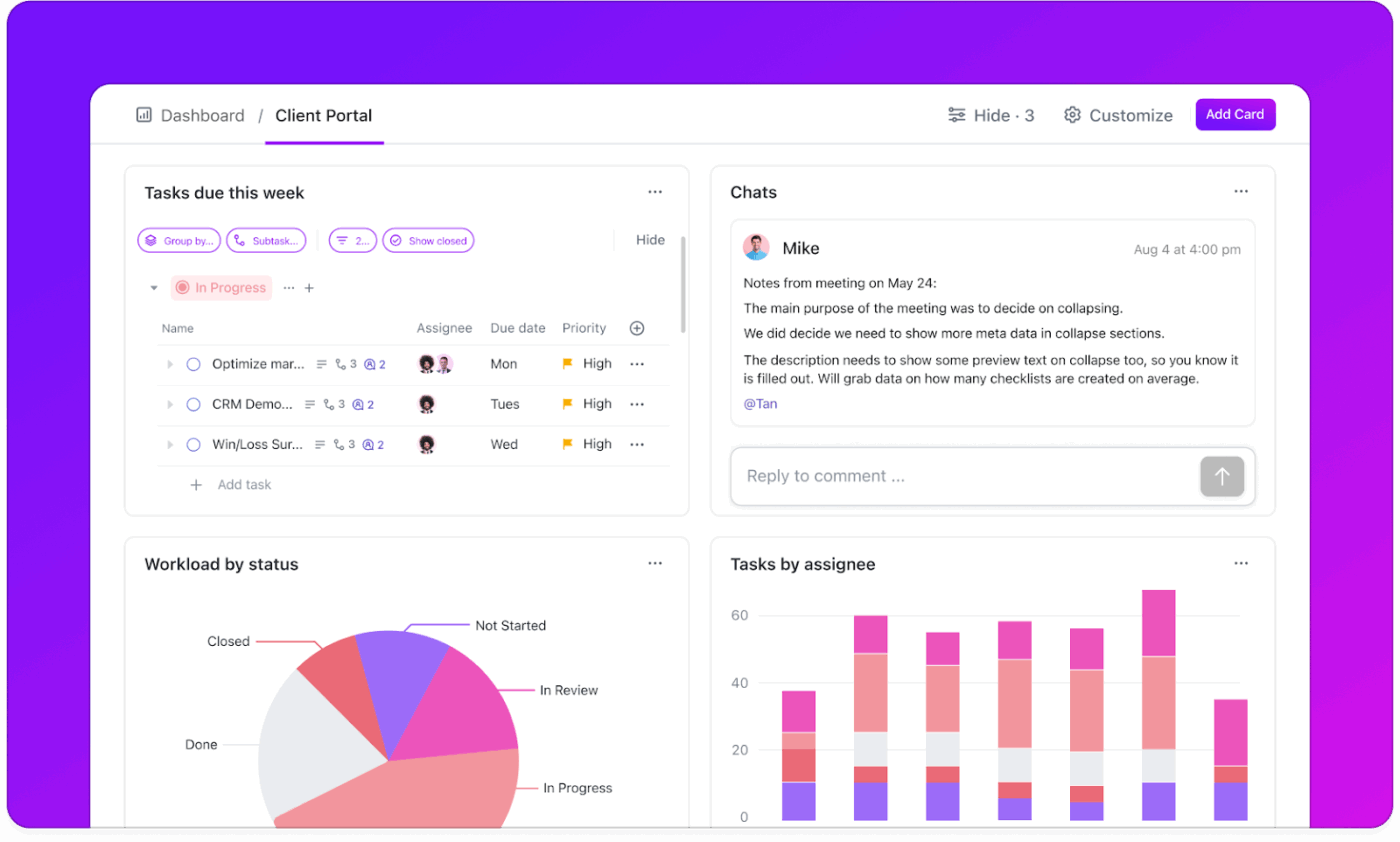
You can see how many tasks are in each status, like ‘Pending Approval,’ ‘Approved,’ or ‘Needs Revision, ’ and quickly identify where approvals are piling up.
Cards can display the average turnaround time for approvals and even sort by team member or client. This makes it easy to track accountability and keep projects on schedule.
Additionally, ClickUp lets you schedule reports from these dashboards. You can automatically send updates to clients or internal stakeholders daily, weekly, or monthly.
💡Pro Tip: Configure a custom ClickUp AI Agent to monitor task statuses and due dates and send reminders, escalate issues, or update statuses as needed, to move things along.
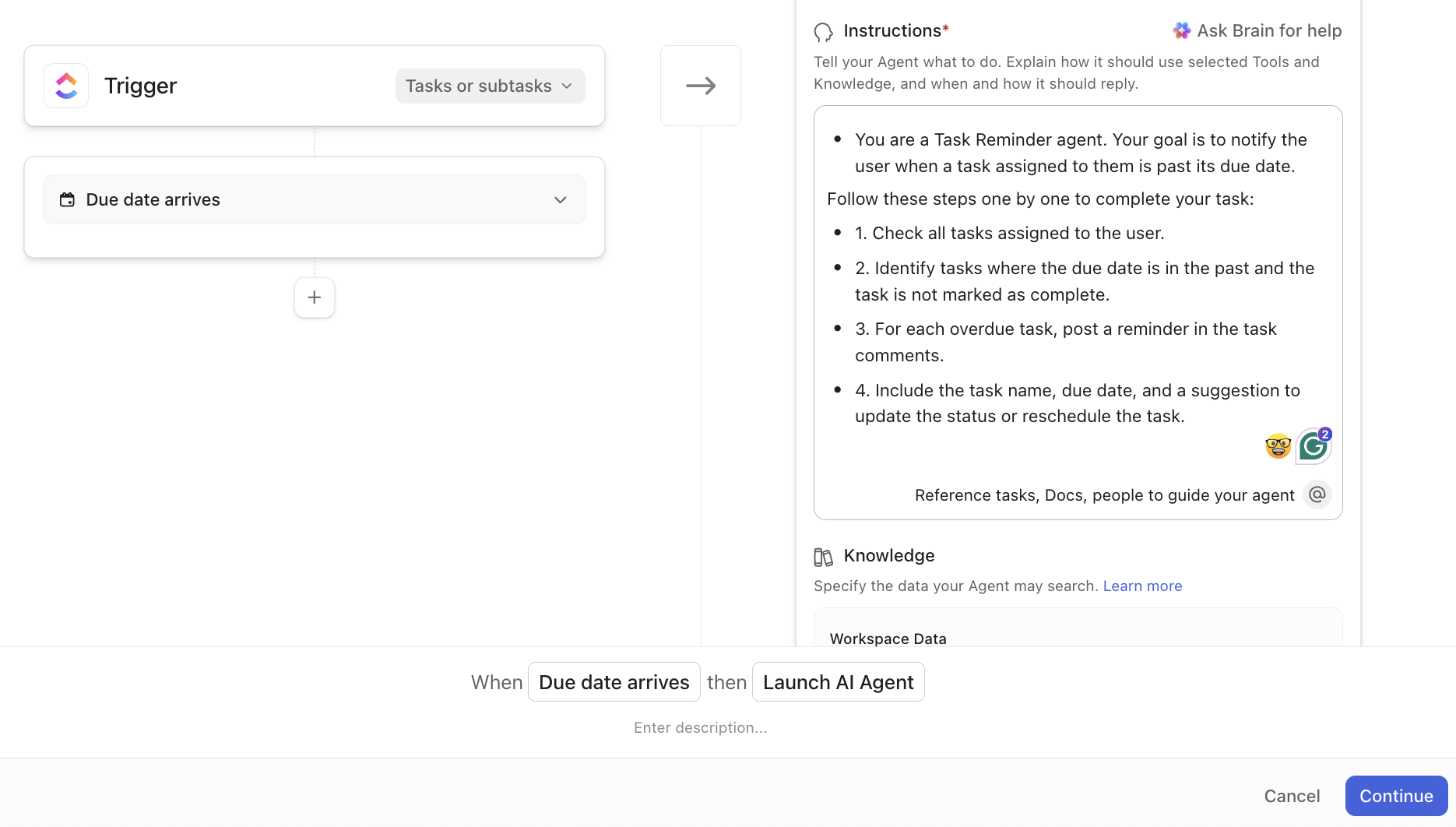
For agency project managers, every day feels like patching holes instead of moving work forward. With an effective approval process in place, your team can move projects forward without unnecessary delays.
ClickUp is the Converged AI Workspace that helps you see everything in one place, without having to juggle a dozen tools. Schedule and manage every deliverable with Tasks, centralize all conversations with Chat, and let a custom Dashboard become your agency’s control center. Top it off with automation and acceleration through ClickUp Brain and Brain MAX.
Sign up for ClickUp for free today! ✅
Agencies can create clear workflows for each client, define decision-makers, set task dependencies, and centralize all feedback in one workspace. This keeps every approval visible, organized, and easy to follow.
Yes. ClickUp lets you set Automations that notify team members when approvals are pending, overdue, or completed. This reduces the need for manual follow-ups and keeps administrative tasks moving smoothly.
Define each approver’s role, create approval maps before projects start, set deadlines, and use tools to centralize feedback. Regular check-ins and documented processes also prevent bottlenecks and ensure workflow efficiency.
Agencies can track approvals using Custom Task Statuses in ClickUp. Dashboards, List View, and Gantt Chart View display each task’s current status, the responsible party, and deadlines. You can also use Task Dependencies to see which approvals are blocking subsequent work.
AI tools like ClickUp Brain and Brain MAX can summarize long feedback threads, highlight key action items, flag potential delays, and even suggest smarter timelines. This helps teams act faster and reduce errors.
© 2025 ClickUp